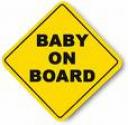We will need to disconnect before we connect with each other. Parents – our primary goal, our most important job, is to raise happy, healthy, well-adjusted, independent children that contribute to society. Our children need to have empathy and listening skills which leads to good relationships and feels like a ‘psychological hug’.
Unfortunately, with iPods, text messaging and instant messaging, we’re not talking at all – at least not face to face. When getting together to go out, kids actually don’t go out at all – they watch movies or play video games. Their social skills are at great risk. A by-product of poor social skills is a lack of empathy. How could our children care about others when they don’t even take the time to know their friends?
A recent news story where a man was found dead after a year with his TV still blaring made me realize were we setting a good example about caring about our neighbors? The man had no contact with anyone for a year, despite the fact that he suffered from blindness and diabetes. Fortunately a water pipe broke, or we still might not know.
A family with two young boys came home from school ahead of their parents who were teachers. The house had been broken into and the boys hid in the backyard until their parents arrived home. Why didn’t they go to a neighbor’s house? They didn’t know any of their neighbors, even though they lived on that block for over nine years.
Not caring is not new. The story of Kitty Genovese still sends chills up my spine. It was 1964 and a young woman coming home from work was brutally stabbed to death while no fewer than 38 of her neighbors witnessed her attack. It would take them three hours after the attack to call the police.
Some might excuse apathy for fear of getting involved. For the record, I don’t buy that theory. The concern is that the simple act of our kids not even getting to know their own family and friends through simple social interaction because they are engaged in being connected may have just the opposite effect. They will be completely disconnected.
Parents – encourage your children to unplug and break out the art of conversation.


